A thermodynamic system is taken from an original state D to an intermediate state E by the linear process shown in (figure)

Its volume is then reduced to the original value from E to D via F by an isobaric process. Calculate the total work done by the gas from D to E to F to D.
As is clear from (figure)
Change in pressure, dP=DF=5.0−2.0=3.0atm=3.0×105Nm−2
Change in volume, dV=EF=600−300=300cc=300×10−6m3
Work done by the gas from D to E to F =areaofΔDEF
W=12×EF×DF=12×(300×10−6)×(3.0×105)=45J
Topper's Solved these Questions
- BOOK - PRADEEPCHAPTER - THERMODYNAMICSEXERCISE - Multiple choice questions18videos
THERMODYNAMICS
- BOOK - PRADEEPCHAPTER - THERMODYNAMICSEXERCISE - Problems for practice54videos
THERMODYNAMICS
- BOOK - PRADEEPCHAPTER - THERMODYNAMICSEXERCISE - Value based Questions4videos
THERMODYNAMICS
- BOOK - PRADEEPCHAPTER - SYSTEMS OF PARTICLES AND ROTATIONAL MOTIONEXERCISE - Assertion- Reason Type questions20videos
SYSTEMS OF PARTICLES AND ROTATIONAL MOTION
- BOOK - PRADEEPCHAPTER - WORK, ENERGY AND POWEREXERCISE - Assertion-Reason Type Questions24videos
WORK, ENERGY AND POWER
Similar Questions
A thermodynamic system is taken from original state D to an intermediate state E by the linear process shown in figure.
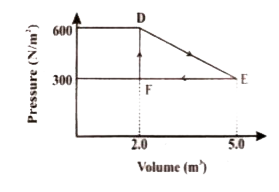
Its volume is then reduced to the original value from E to F an isobaric process. Calculate the total work done by the gas from D to E and E to F.View SolutionA thermodynamic system is taken from an original state to an intermediate state by the linear process shown in Fig.
Its volume is then reduced to the original value from E to F by an isobaric process. Calculate the total work done by the gas from D to E to F.
 View Solution
View Solution
Knowledge Check
- Question 1 - Select One
A thermodynamics process is carried out from an original state D to an intermediate state E by the linear process shown in figure, the total work is done by the gas from D to E to F is
 A100 JB450 JC300 JD250 J
A100 JB450 JC300 JD250 J - Question 2 - Select One
A thermodynamic process is carried out from an original state D to an intermediate state E by the linear process shown in figure. The total work is done by the gas from D to E to F is
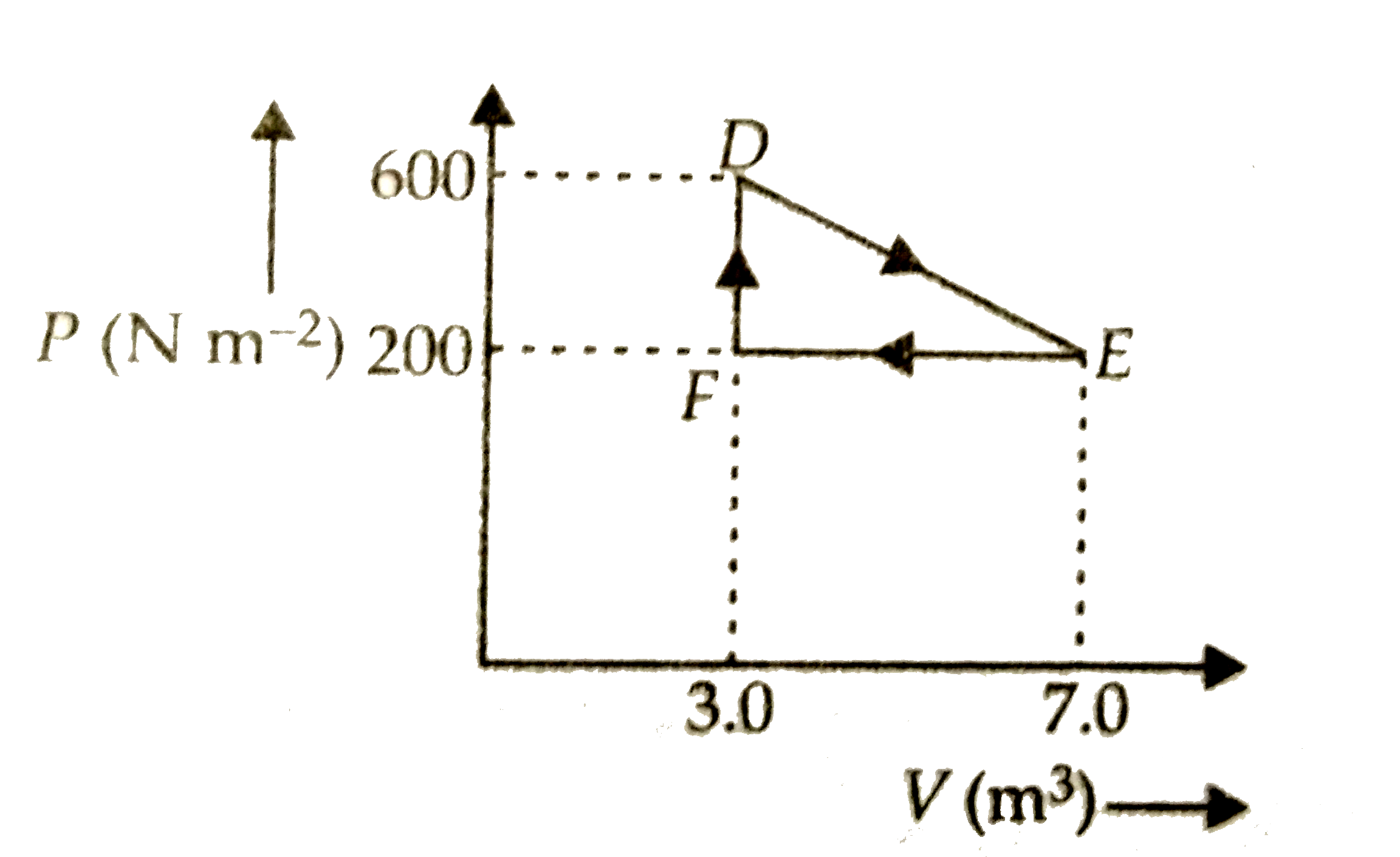 A100 JB800 JC300 JD250 J
A100 JB800 JC300 JD250 J - Question 3 - Select One
An ideal gas change from state a to state b as shown in Fig. what is the work done by the gas in the process?
 AzeroBpositiveCnegativeDinfinite
AzeroBpositiveCnegativeDinfinite
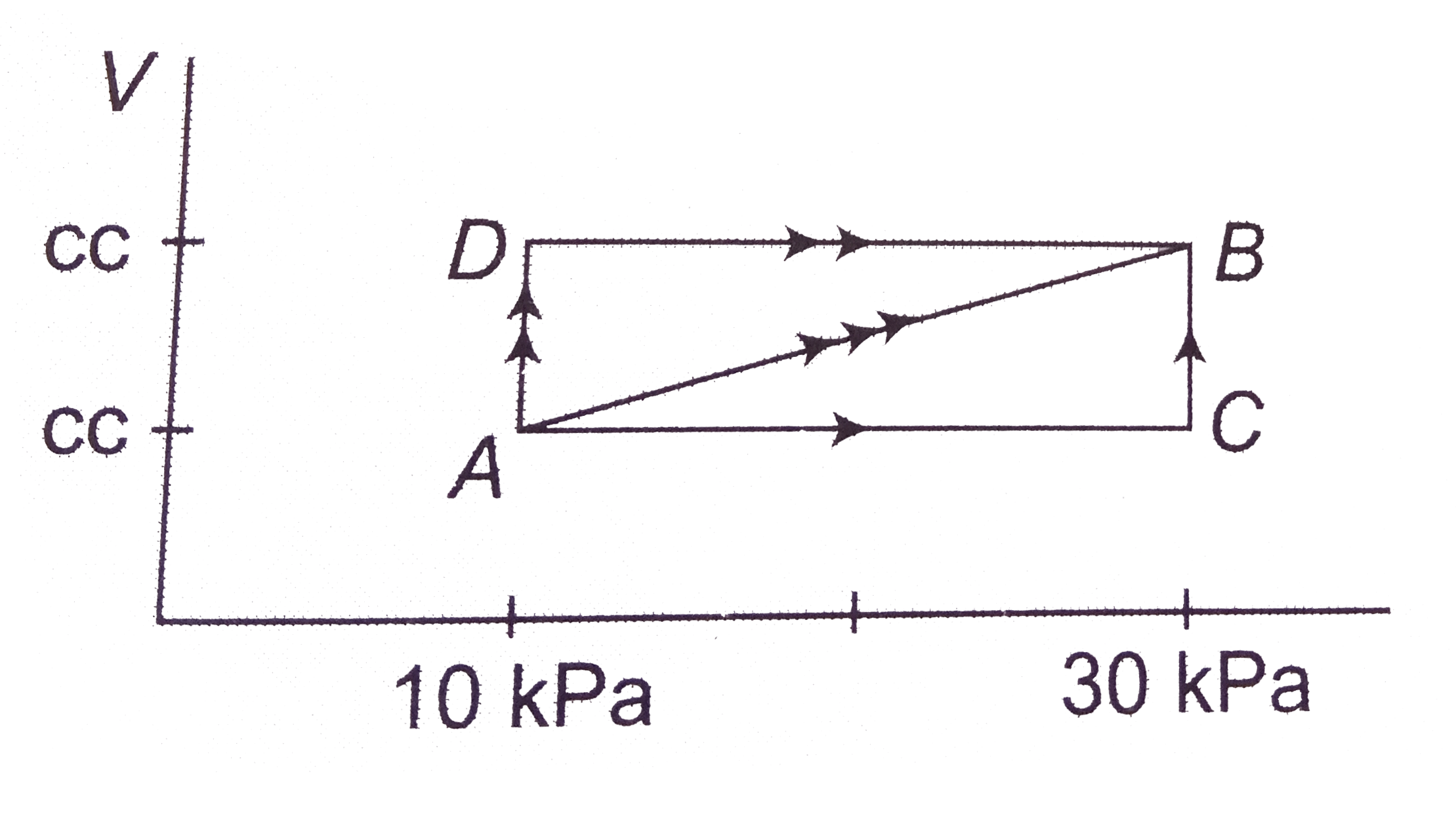
As shown in figure three paths through which a gas can be taken from the state A to the state B. Calculate the work done by the gas in each of the three paths.View SolutionFigure shows three paths through which a gas can be taken from the state A to the state B. Calculate the work done by the gas in each of the three paths.
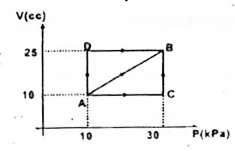 View Solution
View SolutionA certain mass of is taken from an initial thermodynamics state A to another state B by process I and II. In process I for the gas does 5J of work and absorbs 4J of heat energy. In process II, the gas absorbs 5J of heat. The work done by the gas in process II is
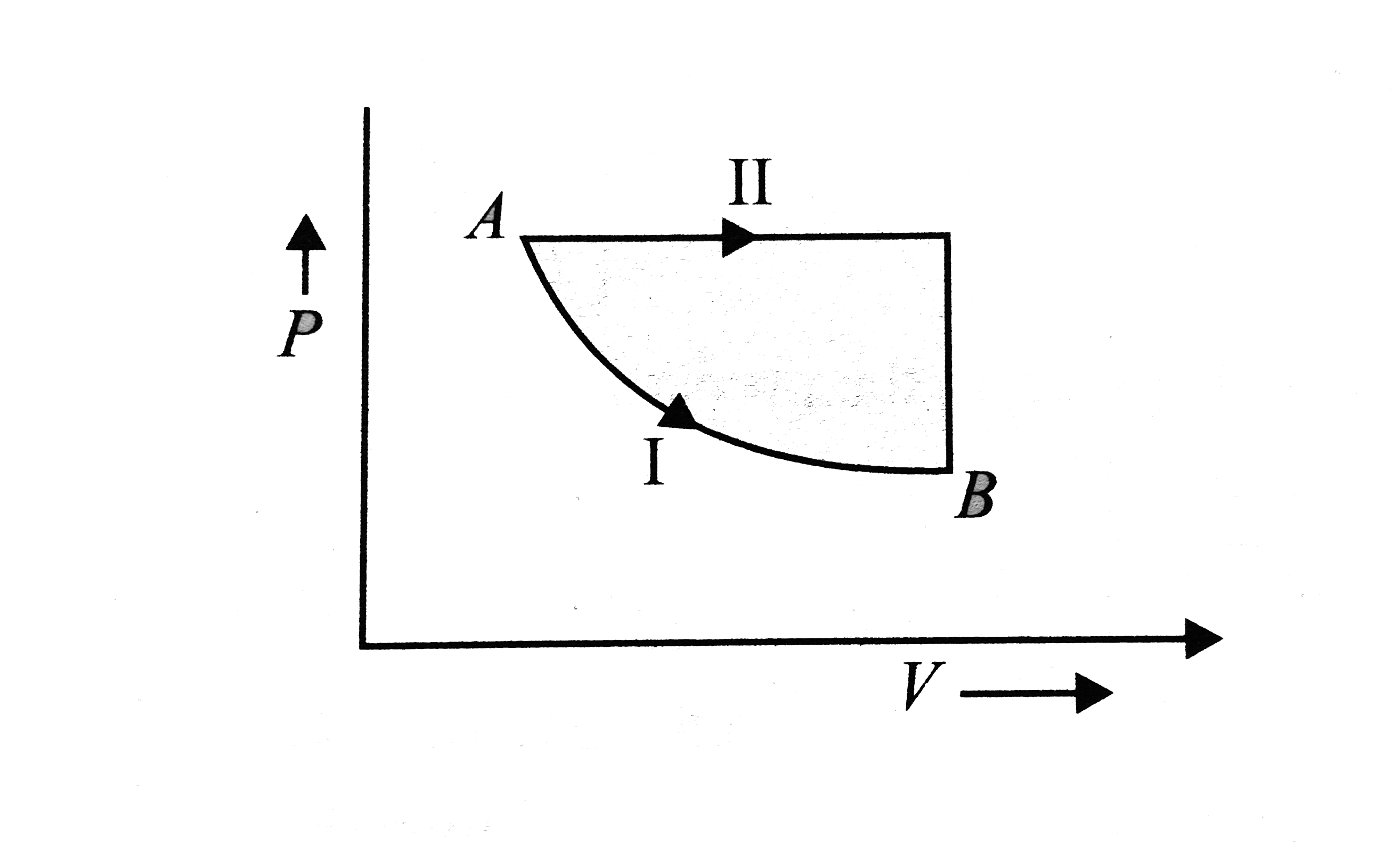 View Solution
View SolutionA thermodynamic system consists of a cylinder-piston attangement with ideal gas in it. It goes from the state i to the state f as shwon in the figure. The work done by gas during the process is
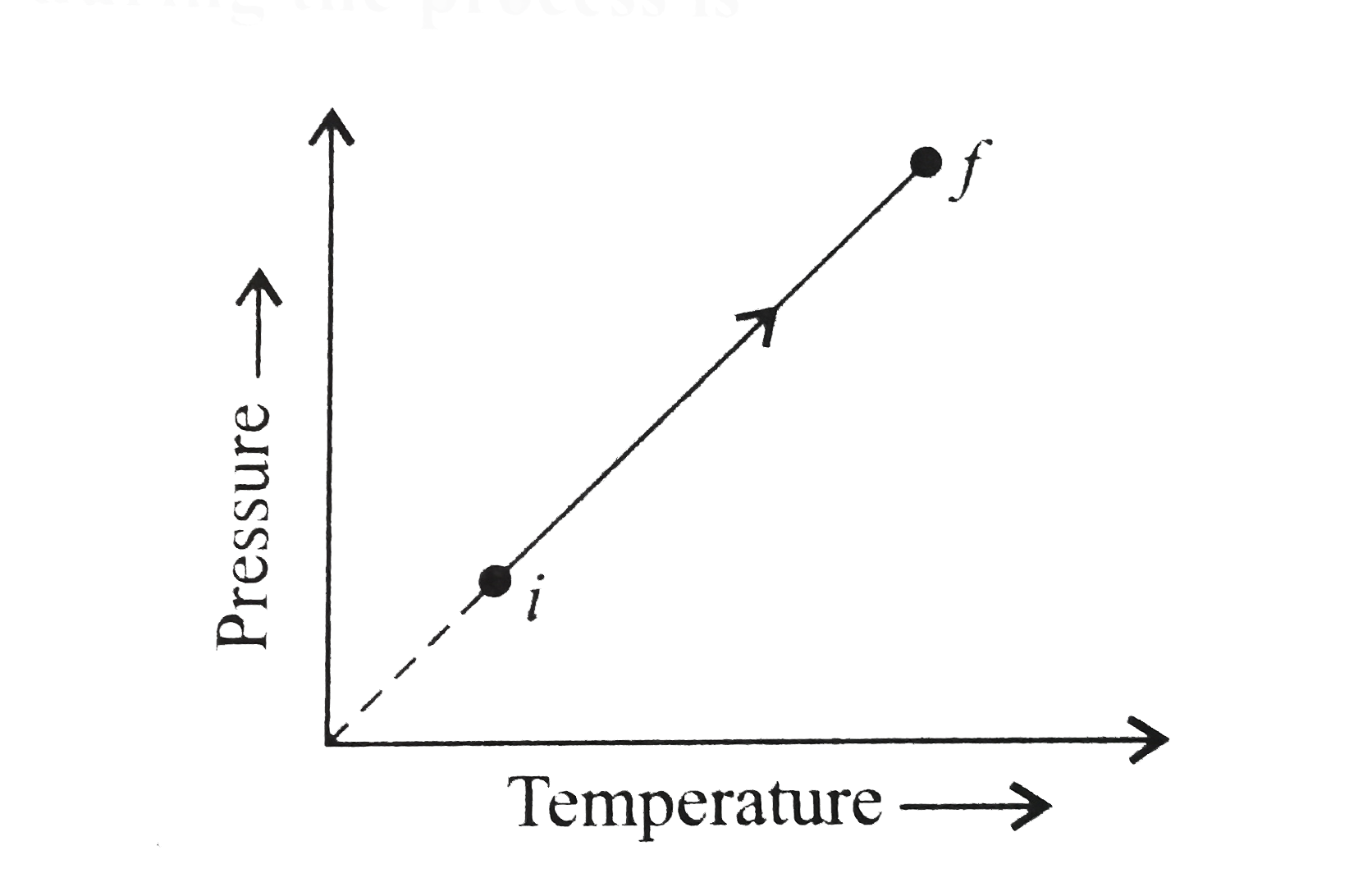 View Solution
View SolutionAn ideal gas change from state a to state b as shown in Fig. what is the work done by the gas in the process?
 View Solution
View Solution

